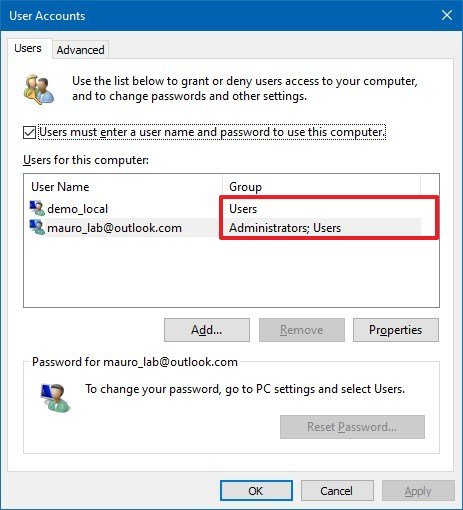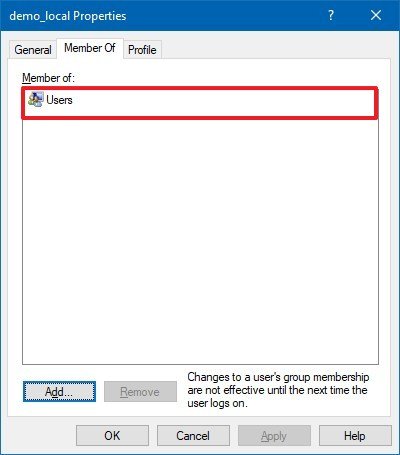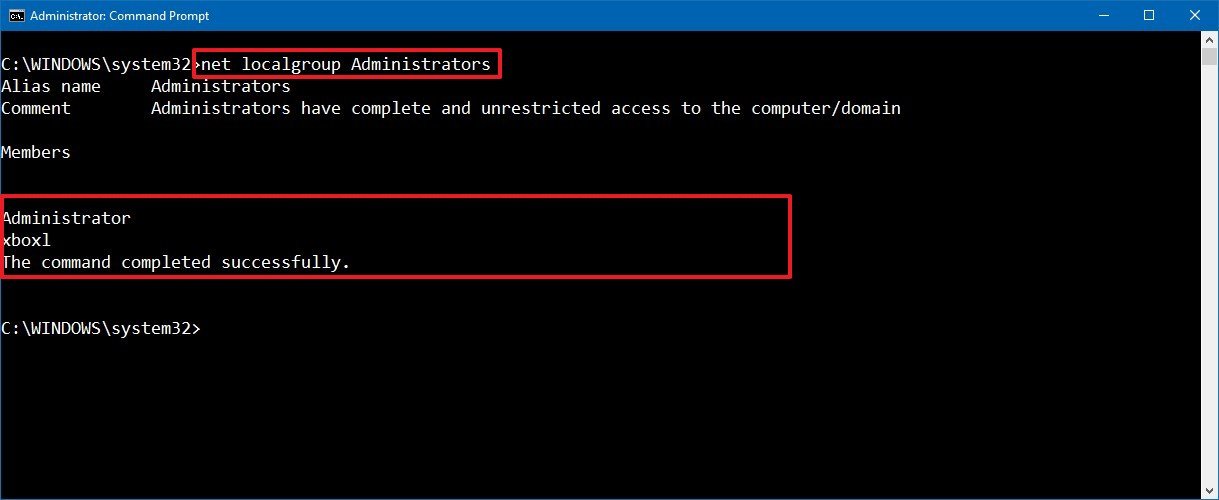How to determine user account type on Windows 10
Don't know the account type users have on your PC? In this guide, we show you five ways to find out.

On Windows 10, you can create accounts with different privileges to control the tasks users can perform on your device.
Usually, you'll see two account types, including the Administrator type, which allows users full control, meaning that they can run elevated tasks, install apps, and change settings that can affect all users. And then there's the Standard User type, which is recommended for most cases but more limited. Using this account type, users can only run apps, change local settings (as long as they don't affect other users), and they can't run elevated tasks without permission.
Knowing the account type for each user (including your own account) can be useful information to determine if you need to change their account type to allow or restrict additional privileges to perform administrative tasks, as well as use certain apps.
In this Windows 10 guide, we walk you through five ways to determine whether a user has an Administrator or Standard User account type on your computer.
- How to determine user account type using Settings
- How to determine user account type using Control Panel
- How to determine user account type using User Accounts
- How to determine user account type using Computer Management
- How to determine user account type using Command Prompt
How to determine user account type using Settings
If you're using the Settings app, depending on the user that you want to check, the account type will be listed in different places.
Determining your account type
To determine your account type with the Settings app, use these steps:
- Open Settings.
- Click Accounts.
- Click Your info.
- Under the "Your info" section, if it reads Administrator under your name, then the account is Administrator. Otherwise, if you don't see anything, it's a Standard user account type.
Once you complete these steps, you'll know whether you have unlimited or limited access to the device.
All the latest news, reviews, and guides for Windows and Xbox diehards.
Determining another account type
To determine account type for other users with the Settings app, use these steps:
- Open Settings.
- Click Accounts.
- Click Family & other users.
- Under the "Other users" section, select the account, and it if reads Administrator, the account is Administrator. Otherwise, if it reads Local account, it's a Standard user account type.
If you have user accounts under the "Your family" section, select the account and click the Change account type button to reveal the account type of the user.
How to determine user account type using Control Panel
To check the account type of any user configured on your device with the Control Panel, use these steps:
- Open Control Panel.
- Click User Accounts.
- Click Change account type.
- If it reads Administrator under your name, the account is Administrator. Otherwise, if it reads Local Account, or you don't see anything, it's a Standard user account type.
Once you complete the steps, you'll know whether the accounts are configured as Standard User or Administrator.
How to determine user account type using User Accounts
To tell if an account is an Administrator or Standard User using User Accounts (netplwiz), use these steps:
- Open Start.
- Type the following command and press Enter:
netplwiz - If the "Group" column reads Administrator (and Users), the account is Administrator. If the "Group" column only reads Users, the account is a Standard user account type.
After you complete these steps, you'll be able to see the account type for all the users configured on your device.
How to determine user account type using Computer Management
To find out if a user has full or restricted access to your device with Computer Management, use these steps:
- Open Start.
- Search for Computer Management and click the top result to open the experience.
- Under the "System Tools" section, expand the Local Users and Groups branch.
- Select the Users branch.
- Right-click the account for which you want to determine its type and select the Properties option.
- Click the Member Of tab.
- If the "Member of" section reads Administrator (and Users), the account is Administrator. If the section only reads Users, the account is a Standard user account type.
Once you complete the steps, you may need to repeat the steps No. 5, No. 6, and No. 7 to determine the account type of the remaining users.
How to determine user account type using Command Prompt
Alternatively, you can also use Command Prompt to determine which user accounts are Administrator and Standard User with these steps:
- Open Start.
- Search for Command Prompt, right-click the top result, and select the Run as administrator option.
- Type the following command to determine the account type for a particular user and press Enter:
net user ACCOUNT-NAMEIn the command make sure to change the ACCOUNT-NAME to the actual name of the account that you want to check. - See the "Local Group Memberships" section to determine the user account type. If the section reads Administrator (and Users), then the account is Administrator. If the section only reads Users, then the account is a Standard User account type.
- (Optional) Type the following command to determine all the Administrator accounts on your computer and press Enter:
net localgroup Administrators
- (Optional) Type the following command to determine all the Standard User accounts on your computer and press Enter:
net localgroup Users
After you complete these steps, you'll have a clear understanding of each account type on your computer.
Mauro recommends all these affordable accessories
Hi, I'm Mauro Huculak, Windows Central's help and how-to guru. I wrote the post you're reading now, and I know the Windows OS inside and out. But I'm also a bit of a hardware geek. These are some of the affordable gadgets on my desk today.
Logitech MX Master Wireless Mouse ($72 at Amazon)
I know mice, and this is the one I use every day. The MX Master is a wireless high-precision mouse that's very comfortable to use and has many great features, including the ability to connect with multiple devices, an infinite scroll wheel, back and forward buttons, all of which you can customize.

Ktrio Extended Gaming Mouse Pad ($12 at Amazon)
If you spend a lot of time typing, your palms and mouse will leave tracks on your desk. My solution was to start using gaming mouse pads, which are big enough for you to use the keyboard and the mouse comfortably. This is the one I use and recommend.

Supernight LED light strip ($20 at Amazon)
You could just use a regular light bulb in your office, but if you want to add some ambient lighting with different colors, an RGB LED strip is the way to go. This one is Mauro-approved.

Mauro Huculak has been a Windows How-To Expert contributor for WindowsCentral.com for nearly a decade and has over 22 years of combined experience in IT and technical writing. He holds various professional certifications from Microsoft, Cisco, VMware, and CompTIA and has been recognized as a Microsoft MVP for many years.
